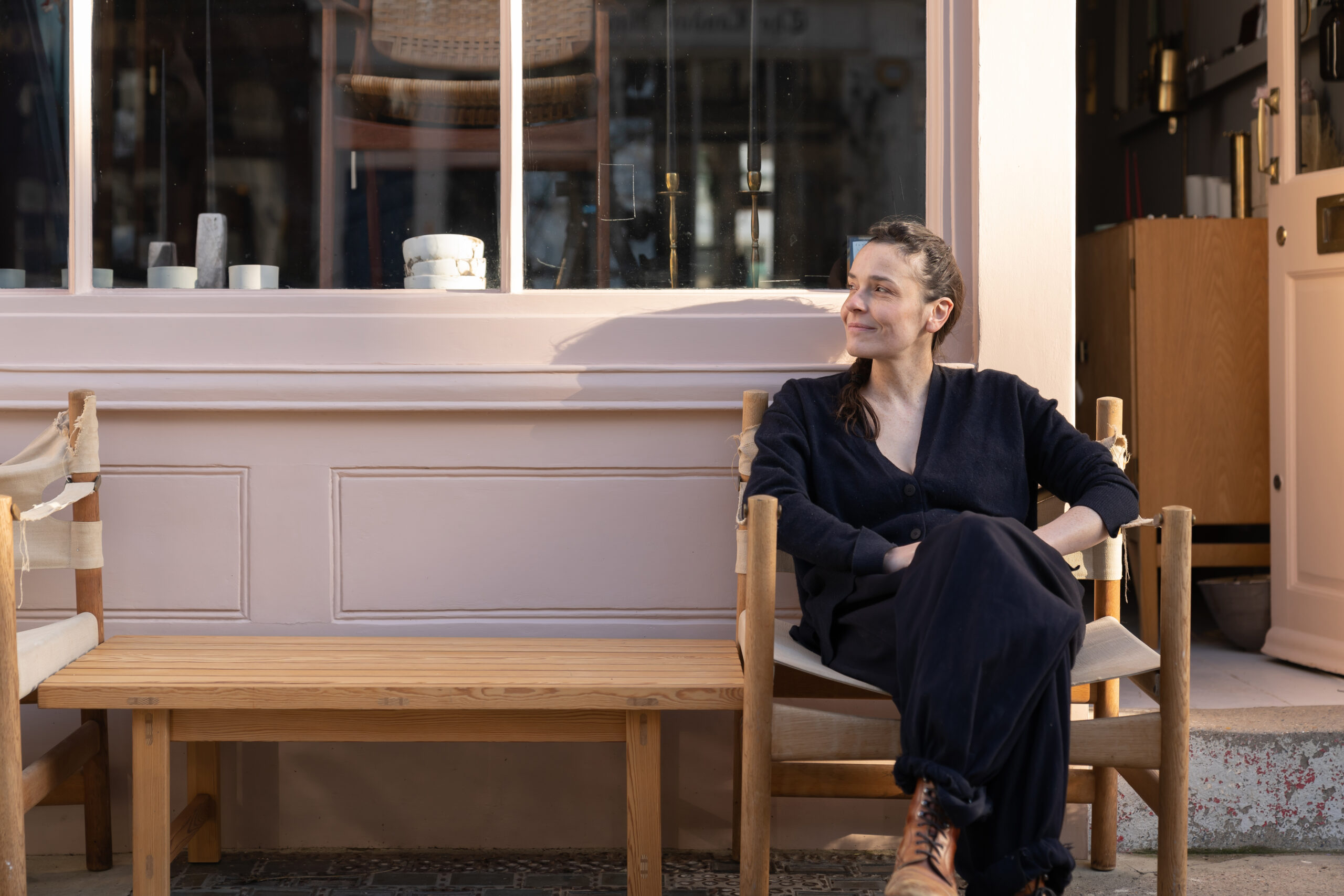Owner Rebecca Denholm takes us on a tour of her carefully curated mid-century furniture shop.
Retro revival is having its moment. Not only is circular sopping is more environmentally friendly but it celebrates designers and movements that have shaped the industry throughout the years. Vintage interiors are seeping into our social media and, slowly, taking over our homes.
Rebecca Denholm set up Foundry to showcase the best of 20th-century design. She sources mid-century classics from seating to tableware to lighting, carefully curating a trove of beautifully crafted pieces. She’s turned her hand to interiors too, styling spaces that are at once laid-back and sophisticated. Elegant yet comfortable.
Giving us a tour of her newly refurbished space, she tells us how Foundry transformed from a personal archive project to one of West London’s most well-stocked vintage furniture stores.

Can you tell us about how Foundry was set up?
Funnily enough, it started with an archiving project that I was working on. It involved conserving and analysing craftsmanship and handmade clothing from the 20th century. Eventually, I needed somewhere to house the archive I had built up, which I found in Needham Road, and as soon as the space was granted live/work permission, a shop seemed like an obvious step. The shop is always changing in layout and selling larger pieces requires an extra set of hands, so Foundry and its furniture range only started to take shape once my partner Lukasz came on board.
How did you approach the design of your physical store?
The layout was about keeping things simple and practical, using honest materials. We used high-grade paints from the Paint & Paper Library and on the lower floor – which is still being refurbished – we chose traditional, breathable materials such as Limecrete flooring. It changes the whole atmosphere of the space, creating a softer feel, not to mention a healthier air quality.
What sort of pieces can customers expect to find in your store?
The selection of mid-century pieces that we choose is quite restrained in terms of materials: soaped oak tables, paper cord chairs, unpolished burnished brass candlesticks, aged rattan benches darkened through sunshine. We have a marble table where the shine has softened through wear, as well as heavy French linen curtains, smoked glass wall lights, a classic, saddle-leather reading chair and beautifully tactile mugs by contemporary ceramicist Georgie Scully.



Do you have a favourite furniture piece?
We often get asked if one of us is from Denmark because we stock so much Danish furniture, especially pieces by Hans Wegner and Børge Mogensen! A few pieces have made it home with me. The Spanish Chair by Børge Mogensen and his low rattan benches are a firm favourite: the chair, with its wide arms, is perfect for when I’m reading a book with a cup of tea. It’s not cosy or squishy like some armchairs but it’s supremely comfortable and calming. I also love Pierre Forsell’s playful brass wall candle sconces and a set of Wegner’s CH23 dining chairs which have just arrived in the shop.
Are there any items in particular that are popular with clients?
The Ester & Erik hand-dipped candles are a firm favourite with regular customers: they’re affordable and beautiful. We also source and sell a lot of dining tables and larger chandeliers for clients too.
How do you go about sourcing the items stocked in your store?
We travel far and wide to find pieces – Lukasz drove all the way to the north of Sweden on his last buying trip! While we usually have a shopping list in mind, which can take a lot of planning, it’s important to be flexible too and open to new discoveries. We buy online too, though there are risks in that, particularly if you don’t know the seller or are buying sight unseen. And when you do see something in person sometimes you have to make very fast decisions on the best pieces before someone else snaps them up.
You stock a lot of mid-century modern pieces. Can you tell us what sparked your particular interest in this period?
I’m not nostalgic about mid-century pieces and, interestingly, not everyone who comes to the store realises they’re not brand new, which I think is great. The attraction for me is the quality and character, which can be exceptional. That level of craftsmanship is much harder to come by today, though I’m hoping we’re beginning to see a renaissance when it comes to modern craft.
I like many different eras and styles, but overall I favour pieces that are beautifully crafted using honest natural materials which you can’t imitate.
- Rebecca Denholm, Founder


Where are your favourite places to eat, drink and hang out in Notting Hill?
The area has changed a lot since I used to sell vintage clothing at the market down by the Westway, but I still enjoy visiting friends in Portobello Road and Golborne Road on a Friday. The Makan Cafe in Portobello Road is an institution among market traders, with its delicious Malaysian food. Although I cook a lot at home or in the garden of our shop during the summer, I still love going to Ottolenghi in Ledbury Road and Granger & Co. just round the corner from us not only does great food but has a fantastic interior, with its Pierre Jeanneret-inspired chairs.
You say that much of your furniture and clothing has “endured the test of time”. Why is it important to you that pieces are passed on through generations?
To survive long enough to be enjoyed by another generation is very special – almost like a kind of time travel – and if a piece is still relevant it reveals a common thread of humanity and connection which I find beautiful. There are also more obvious implications in terms of sustainability: cherishing rather than wasting heritage, craftsmanship and our limited resources.






